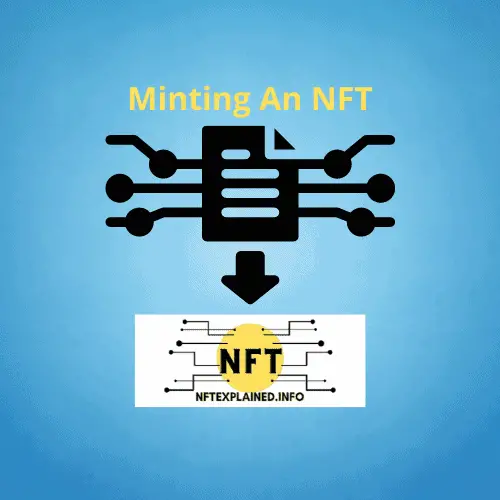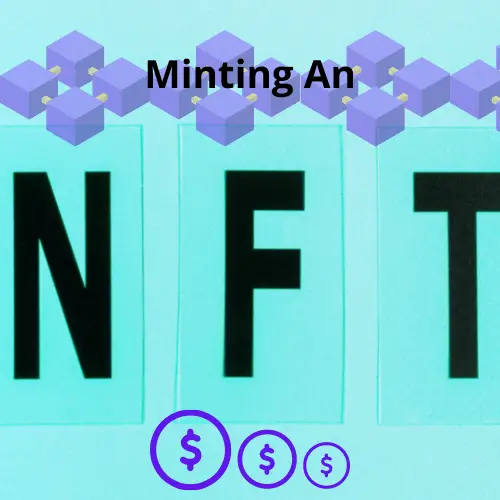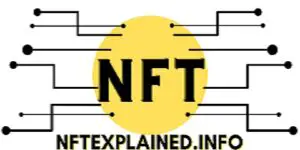
NFTs or non-fungible tokens are unique one of one digital assets that allow for ownership on the Ethereum blockchain. NFTexplained.info is a team of long term crypto investors who have experience within the NFT space and have the purpose of providing valuable information.
Minting an NFT is the tokenization or the creation of a digital ‘receipt’ that is stored on the blockchain. Minting means the purchaser is the first person to have ownership of the digital asset. When an NFT is minted it is often from the creators website and it is then stored in a digital wallet/transferred to OpenSea.
Minting an NFT essentially means the purchaser or person who mints is the first one to register the token to the blockchain. They are the first person to get their hands on the NFT. Once an NFT is minted, for it to be sold again, it would have to be on the secondary market (i.e. OpenSea).
Minting an NFT can be thought of as purchasing a limited item directly from the seller. This allows purchasers who mint to receive an enormous return on investment if the NFT price exponentially increases.
NFT marketplaces such as OpenSea use lazy minting in order to avoid transaction cost as well as save energy.
If you are interested in learning about OpenSea and how to set it up, that can be found here.
If you are interested in learning more about the energy an NFT consumes, that can be found here.
Lazy minting allows users to upload their digital asset and list it for sale without it being registered to the blockchain. With lazy minting, once a user purchases the NFT, a gas fee for the transfer of ownership is incurred by the buyer.
This allows creators to avoid gas fees; this prevents creators from taking a loss as tokenizing a digital piece without it being sold would only incur fees.
Prices for minting can vary widely however, the creators of most projects set it to below .1 Ethereum; this allows a larger number of people to participate in the purchasing of a project.
In this article, NFTexplained.info will also cover who determines the mint price for an NFT, the additional fees that are incurred along with minting, and who receives the gas fees when an NFT is minted.
Who Determines The Mint Price For An NFT?
Transaction on the Ethereum blockchain requires gas for anything to be possible. Gas is a separate fee and is unrelated to minting; it is something users must pay in order to make any transaction possible.
The mint price for an NFT is determined by the creator or creators of the NFT. Creators have the ability to set the minting price at whatever they choose. As a general statement, minting prices are often below .1 ETH for most projects so a wider number of purchasers can afford to buy.
The creators of NFT projects are able to set the mint price at what they choose through coding. Creators can use an array of different coding languages however the process for creating a minting price involves coding.
When minting, a gas fee is also incurred as a miner must approve the transaction. Gas is the fee for transactions that occur on chain.
Creators of NFT projects are able to receive a large sum of money if the initial drop or the mint for the project is sucessful. For example, if a creator sold an NFT line of 10,000 NFTs at 0.08 ETH or roughly $300 (at this point in time), the creator would quickly receive $3,000,000.
If you were to mint an NFT for 0.08 ETH it is very likely that .1 ETH would be needed (give or take) in order for the gas fee to be covered. Fees can be a lot higher or far less.
The price of gas depends on the number of transactions that are occurring on the blockchain at that specific point in time. If more users are looking to transact, fees will be much higher.
What Fees Are Incurred During The Minting Of An NFT?

As NFTexplained.info previously mentioned, there are additional fees when it comes to minting an NFT or essentially doing anything related to NFTs as gas is required for transactions to be processed.
When minting an NFT, a miner must verify the transaction to ensure it is legitimate. When any transaction occurs on the blockchain all users can see it, making it safe (P2P network). Miners must verify the minting of the transaction which incurs a gas fee; the gas fee is paid to the miner.
Aside from the number of users looking to transact on the blockchain, the price of gas also depends on the consensus algorithm used.
In a ‘Proof of Work’ consensus algorithm miners are competing amongst one another to be the first to verify the transaction and receive the reward. In a Proof of Stake consensus algroithm a single miner is chosen to verify the transaction. Both consensus algorithms have pros and cons.
If you are interested in learning more about the PoW and PoS consensus algorithms and the energy an NFT consumes, that article is linked here.
As a general statement, when minting an NFT, the fees incurred are the minting price and the gas fee.
Who Receives The Gas Fees When An NFT Is Minted?
Creators of NFT projects often drop an NFT line at a specific point in time in order to avoid paying high fees. For example, if one project with a lot of hype is set to drop at a specific time, creators will choose a separate time or have dedicated white list spots for the project – in order to reduce the number of people transacting.
When an NFT is minted, or bought/sold on the secondary market, a miner receives the gas fee. The gas fee is a miners reward for verifying the transaction. Gas fees may be expensive but make the peer-to-peer network safer through transaction verification.
The creators of the NFT project do not receive the gas fee, they only receive the minting price. Creators may receive a small commission from the NFT exchanges hands on the secondary market.
The hands an NFT touches plays a role in price; this phenomenon is an important element of provenance. NFTexplained.info has created an in-depth article on it; it is linked here.
We hope you are just as excited as we are about NFTs and continue to stay informed at NFTexplained.info. To get the latest news in this rapidly evolving space, follow our team on Instagram & Twitter!
